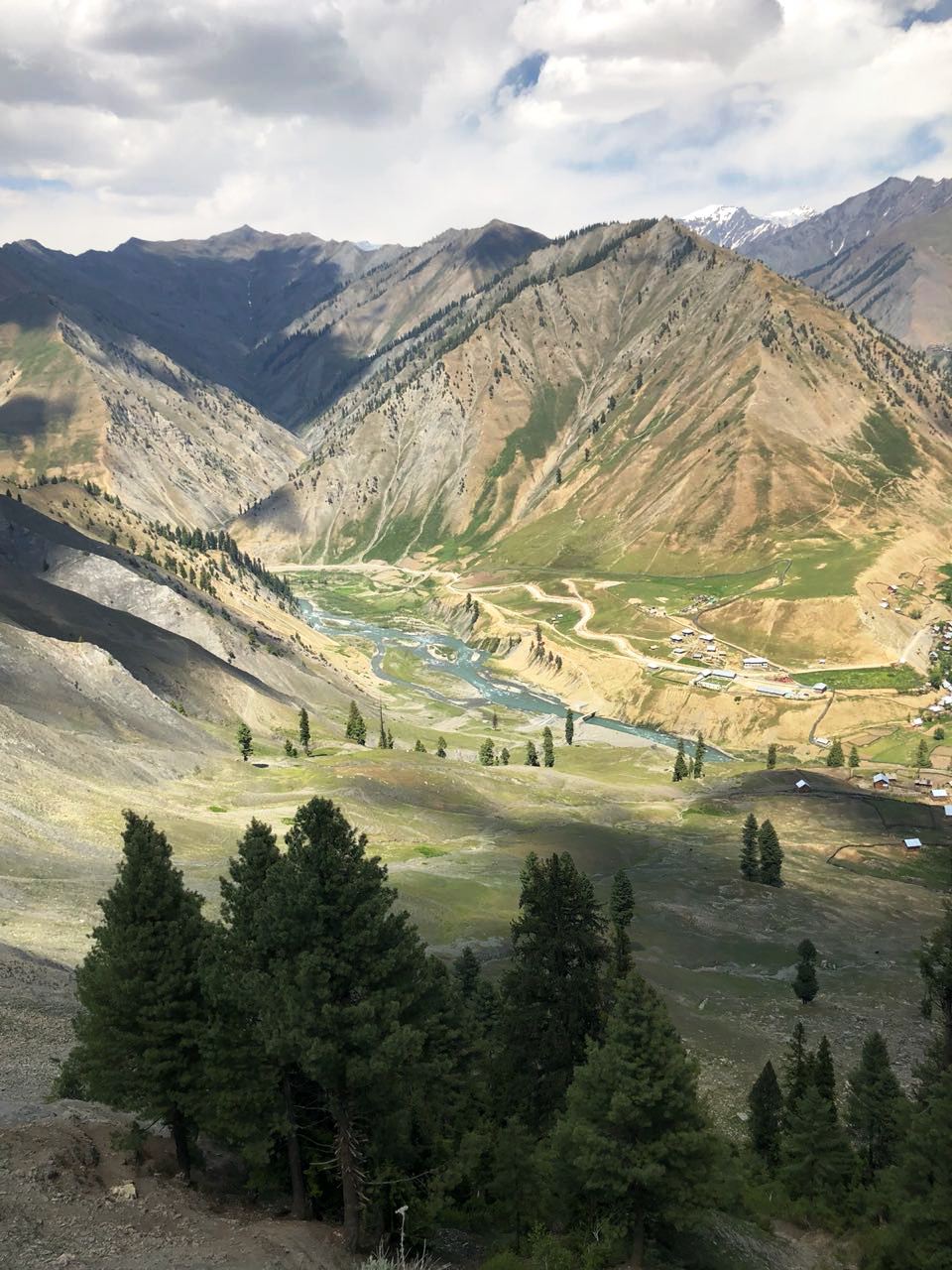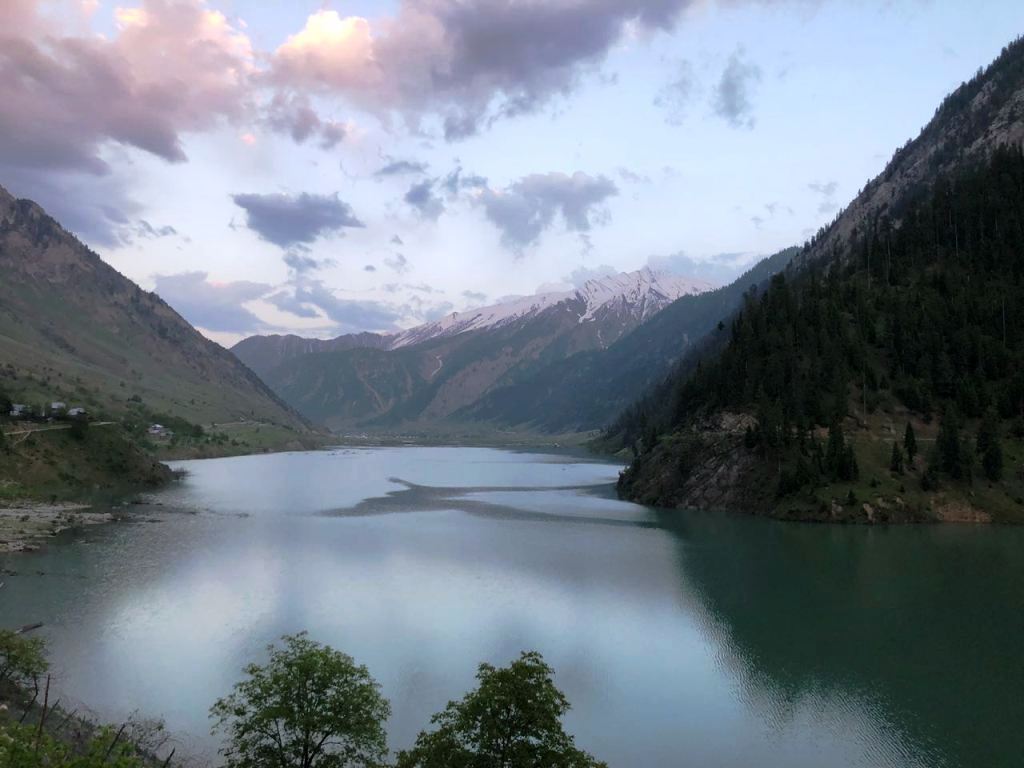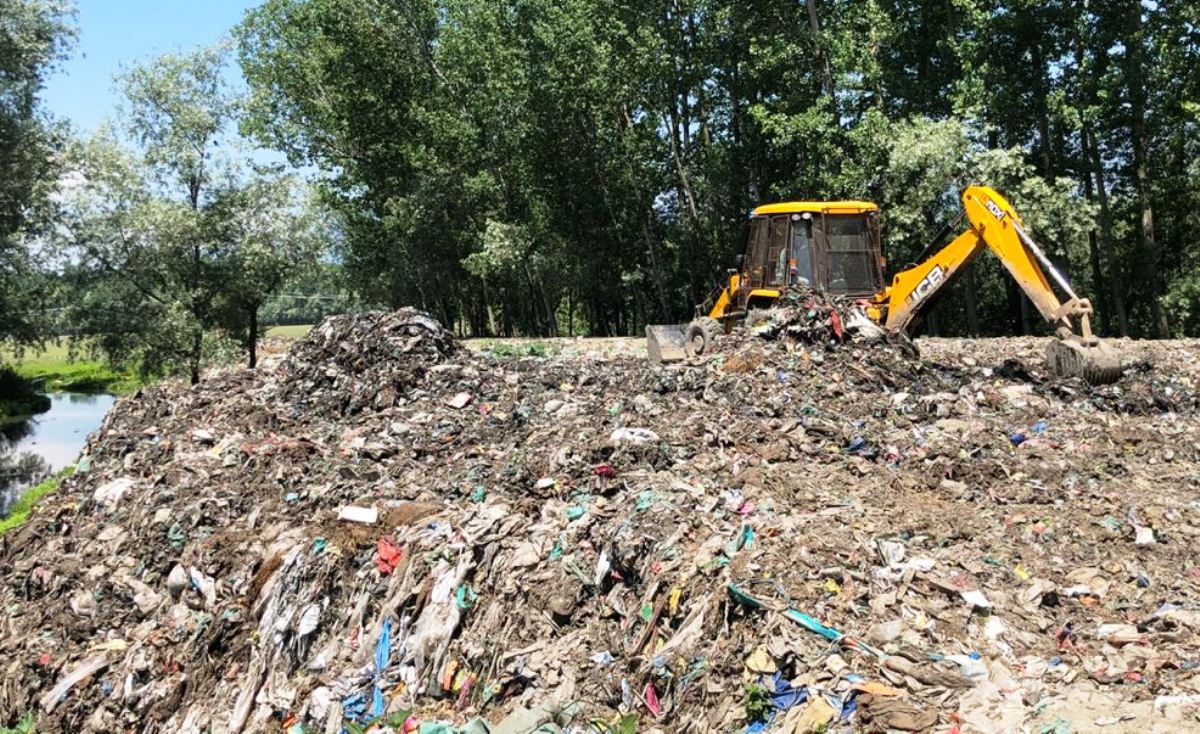by Tassaduq Mufti
Last week, I visited Gurez and Tulail. It was my second visit to the region.
The first visit was in the summer of 2012. Then as a cinematographer, I was directing my first commercial for Incredible India. This time, it was purely as an administrator.

On way to Gurez: A photograph, a poem
Experiencing a place, as a filmmaker and an administrator are two vastly different experiences. First time around I was looking at things through the scope of a transitory traveller and a film professional seeking to find slices of life to fill my frames. I was awed by the beauty of the place and its people and came back with some indelible impressions. The current visit however was driven by a different set of objectives: to explore the tourist potential of the place and address everyday grievances.
It may be best to begin with our road journey itself. Except for a brief stretch on Razdan pass that seems to have held up quite well, the roads remain in a pitiable state, slopes torn up and screaming for attention. It is appalling that even after the floods and all that is known about the ill effects of hillside erosion and unnecessary run off on our lakes and rivers, bioengineering and stabilisation do not feature in our budgets comprehensively. To be so appallingly ignorant of this very essential measure and call ourselves progressive as a government would be a seriously flawed assessment of ourselves.
A cottage stood at the Razdan top meadow. It is a structure constructed in 2012 by the Department of Tourism. It is located at a picturesque spot. There are of course are no provisions made for the waste that would be generated if the place ever got going. In this particular case, the property never did. It was evident from the caved-in roof. The engineer had not taken into account the vagaries of nature and heavy snowfall at such high altitude. The building lies in a state of disrepair like many such government properties all over the state.

This must be the biggest ever man-made lake that Kashmir developed
Moving onwards we reached the Kishan Ganga dam. A precious bit of God’s grace has been lost to human intervention. What was once a beautiful forest is now a man made lake. We can only pray that our handiwork matches the delicate craft of evolution or supreme intelligence, whichever is your belief.
Although looking at the state of affairs in our towns and cities, I doubt that it will. It is logical to assume that people most affected by this intervention would be the first beneficiaries of this “development.”
Ideally, they would also have the first right to the electricity generated by the power project. In an organised and empathetic world, a comprehensive relocation and rehabilitation plan would have been a significant part of the project. In setting up new villages we would have strived to learn from the wisdom and mistakes of the bygone years. We would have tried to preserve the regional identity of the place, used current learning to fill the gaps and moved forward in a way that is sustainable. Modern engineering skills and science, a subject whose importance we are quick to emphasise to our young ones but remains conspicuously absent from our own understanding of things, would have converged to give us a “model village.” That unfortunately does not seem to the case. A tract of land is allocated, some money distributed and the rest of the things follow in their own sweet rhythm and time.
Traces of destruction in the form of debris and eroded hillsides are evident everywhere. Run off from the surrounding slopes is sure to reduce the life of the dam amongst all other destruction that it will bring. All the plans of reforestation, biodiversity conservation and ecological management should have been set in motion the moment the project was initiated.

Remains of the “civilization” on way to Gurez
On enquiring about an environment management plan I received a single sheet with a list of funds allocated to various departments. NHPC has promised to share their Environmental Impact Assessment and Environment management plan with me. There is perhaps an immaculate plan in place. I hope to be pleasantly surprised.
On speaking to the locals a plethora of grievances came forward. An overwhelming sense of feeling neglected was apparent amongst the general public. Bad roads, electricity, inadequate health staff, lack of public transport, lack of communication, insufficient class room space, unemployment… these issues ran like a common thread through the entire region. Living in such a terrain with long harsh winters is a huge challenge as it is. It is further compounded by mismanagement, incapacity and apathy. This culture of incompetence will persist till those of us who are responsible continue to congratulate ourselves on our mediocrity and ignorance.
Badaugam, at a distance of village 120 kms from Bandipur was declared a model village in 2008. Ironically it is one of most destitute villages in the area. Lack of drinking water, a power generator that had been out of service for six months when we arrived and a half-finished culvert is the defining woes of the model village. Lecturers visiting from various parts of the state live in deplorable conditions. Four men huddled up in a room. No water to drink or bathe, no kitchens, no furniture. Some of them haven’t been paid their salaries for eleven months now.
Should we not be thinking of making life comfortable for our employees working in such inhospitable conditions? Should they not have the very basic utilities? And how much of a burden would be to set up a sort of indoor facility with some games and entertainment where they could get together during the arduously long and harsh winters? Looking from the perspective of a prospective tourist, a place can scarcely be expected to provide a traveller a good time if everyday life is a challenge for its inhabitants.

Behind the barbed wire are the discarded machines
On the way back we visited Noosu in Bandipur. The main dumping site is situated strategically along the canals feeding into Asia’s largest fresh water lake, the Wular. It is as if we want to ensure that the sum total of our nescience, indifference and greed defiles our waters. Not too far upstream, adjacent to the canal is a primary school.
Being in some way at the receiving end of this malignancy I expected the teachers to be more aware of the processes that could rid us of this menace: to be at the forefront of the change in their own small way. None of the teachers had a clue. Such is the efficacy of our awareness programmes.
God has been benevolent to us. We are blessed with great natural beauty, fresh air and clear waters. It is imperative to get our priorities right before it is too late. Air, water, land and forest is perhaps a good order to follow. These are the foundations of a healthy society and must become the cornerstone on which to base our policies. The day we realise that the clarity of water running through our land is a measure of our culture and our ethos, prosperity will be ours keep.
(An ace cinematographer, the author is state’s Tourism Minister.)
from Kashmir Life https://ift.tt/2sy1aqK
via IFTTThttps://kashmirlife.net
No comments:
Post a Comment